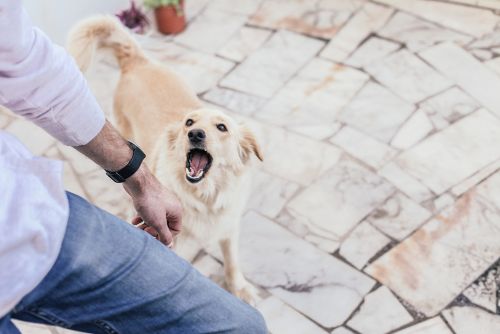Most dog owners have learned that the number one trigger of chronic barking is the doorbell. Dogs react to the sound of a knock at the door or the doorbell as a way to alert us. While we may appreciate that our brave canines want to protect us, overreaction to people coming to the door is a problem. No one likes to hear dogs barking furiously or be on the receiving end of a jump.
It is entirely possible to teach your dog not to react to the doorbell. The team at Union Lake Pet Services is here to explain how to do it.
Teach Your Dog Not to Bark at the Door
Dogs react to outside stimuli because they want to guard their territory. And dogs barking at postal workers is a universal joke, right? Actually, many pet owners have been fined for chronic barking, aggression, and other public disturbances, as well as being the subject of evictions related to unruly dog behavior.
So, what’s the solution? Here are the steps you can take to curb the bark.
- Knock on surfaces and ring bells at random times – The goal is to desensitize your dog to the sounds of knocking and ringing. At random intervals, knock loudly on doors or walls to acclimate your dog to the sound. Ignore the reaction yourself to show your pet that there is nothing to respond to. Have different family members go outside and ring the front door, then tell your dog to sit. Practice these steps until your dog is quiet at the sound of outdoor sounds. With each successful command, reward your dog with a treat.
- Train your dog to go to their bed or crate – Encourage a more positive experience with outside noise by training your dog to go to a designated spot. This can include their bed. Tell them to go to their bed or crate when the bell rings, or they hear a knock on the door. When they do this, reward them with a small treat and use the command “stay” while you answer the door. When they stay at the command, give them another reward and verbally praise them for being a good pup.
Before you give your dog free rein of the home, do some practice runs with family and friends. Have them swing by unexpectedly and ring the bell or knock on the door. Do these practice runs to get your dog used to the idea that these sounds mean reward and that the situation is a friendly, social one.
Train Your Dog Not to Jump On Guests
Jumping is not only annoying to guests, it can also be dangerous. Jumping on small children or a senior person can result in injuries, not to mention dirty or ripped clothing. To discourage this behavior, take the following steps.
- Set up a barrier – Use a baby gate to enclose the foyer or hallway, so your guest can enter safely. This will give your dog a chance to calm down and see who’s entering without being too close to react by jumping up.
- Teach your dog to sit and wait for a reward – When someone enters, ask your dog to sit. When they respond and remain calm, reward them with a treat. Continue to do this each time someone comes to the door. You can also train your dog to greet the guest. Give the guest a treat they can hand to your pet when they are well behaved. Your four-legged will learn to view guests as something positive.
As mentioned above, you can also cue your dog to go to their “‘spot,” whether that’s a bed or specific area of the home, and wait patiently to be called for a reward.
Questions About How to Teach Your Dog Not to React to the Doorbell
Remember that with any manner of training you should avoid scolding or punishing your dog. This only reinforces the bad behavior. If they are anxious or afraid of strangers, punishment gives them more reason to be afraid. Stay positive and focus on the behavior you want and the reward you give them for being a good boy or girl.
Union Lake welcomes your questions about how to teach your dog not to react to the doorbell or strangers. Call us for more information or to schedule an appointment.

